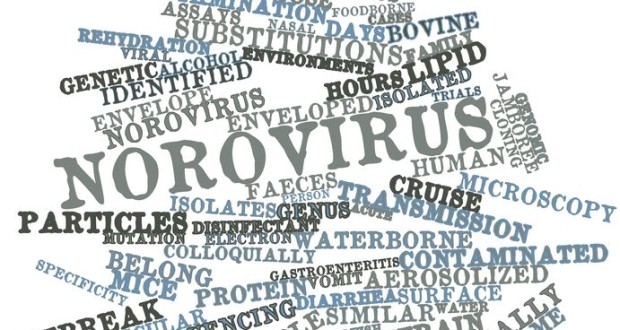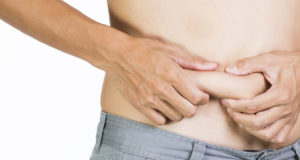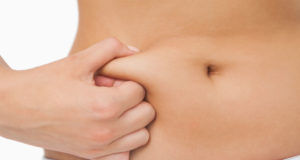There would seem to be fewer things more appealing than a Caribbean cruise, particularly during the dead of winter. You can imagine that passengers aboard the Explorer of the Seas, a luxurious cruise ship that can hold over 3,000 guests, were looking forward to their January 2014 trip to the U.S. Virgin Islands. Unfortunately, unbeknownst to the crew and passengers, the Explorer of the Seas turned out to be hosting a microscopic stowaway. This uninvited guest was no mystery ailment – rather, the cause of the passengers’ plight was a well known pest that afflicts millions of people every year.
Examining the Virus
The culprit behind the outbreak, a group of closely related viruses known as norovirus, wound up sickening nearly 700 passengers on the cruise ship. While you may not have heard of it, norovirus is actually the most common stomach bug in the United States. Each year, an estimated 19 to 21 million Americans fall victim to this virus, resulting in 56,000 annual hospitalizations.
As one might expect, contracting this virus is not a pleasant experience. A person with norovirus can expect to experience cramping, nausea, vomiting and diarrhea. As if these problems weren’t troubling enough, patients may also suffer from headaches, muscle aches, fatigue, chills and mild fevers.
Though is it is a common healthy problem, there are no medications specifically designed to treat norovirus. Instead, patients are generally told to rest and consume plenty of fluids. Fluids that can be helpful to patients include water and juices. Alcoholic and caffeinated drinks, in contrast, can dehydrate the body and should be avoided. In addition, sugary drinks can worsen norovirus-induced diarrhea.
Despite the lack of treatment options and distressing symptoms, most people bounce back from norovirus fairly quickly, making a full recovery in a matter of days. This isn’t the case for everyone, however. Some patients, particularly children and elderly individuals with weakened immune systems, require hospitalization due to severe dehydration and malnutrition.
How Norovirus Spreads
One of the main reasons why norovirus is so common is that it’s easily transmissible. Norovirus is a very durable opponent, as it can survive in a given environment for up to four weeks. Because of this trait, norovirus often lingers on various surfaces and objects, allowing it to quickly spread in relatively cramped and crowded environments. Examples of such places include daycare centers, schools, hotels and nursing homes. Cruise ships like the Explorer of the Seas also fit this criteria. After touching a surface laced with norovirus, many people put their hands close to their nose, eyes and mouth, giving the virus a clear shot at entering the body.
Another transmission route for this virus is contaminated foods and drinks. In fact, the Centers for Disease Control and Prevention (CDC) estimates that roughly half of all food-borne outbreaks can be blamed on norovirus. The foods most likely to be affected by norovirus include leafy greens and fresh fruits. Shellfish such as oysters, clams and mussels may also harbor strains of this virus.
Preventative Measures
While it’s impossible to completely eliminate your risk of contracting norovirus, following certain hygienic guidelines can help keep this virus at bay.
Properly Prepare Fruits, Veggies and Seafood – Given that norovirus often finds it way into the body via food, it makes perfect sense to take reasonable precautions when making meals. Specifically, fruits and vegetables should be thoroughly washed before they are eaten, whereas all types of shellfish should be well cooked prior to being served.
Clean Contaminated Surfaces – It’s not a pleasant thing to think about, but diarrhea and vomiting triggered by norovirus can easily contaminate various surfaces, serving to spread the virus to other people. Such messes can be cleaned using with a chlorine bleach solution, provided it contains 5 to 25 tablespoons of household bleach per gallon of water. Aside from using a bleach-based cleaner, some disinfectants have been approved by the Environmental Protection Agency (EPA) for cleansing surfaces infected with norovirus.
Wash Clothing Immediately (But Also Carefully) – Unfortunately, norovirus doesn’t just fester on surfaces; clothes covered with vomit or fecal matter can also transmit this virus to others. Though contaminated clothing should be washed as soon as possible, such items should also be handled with care. Failing to do so might cause pieces of vomit or stool to fall onto floors and other surfaces.
Stay Out of the Kitchen When Sick – This one is a no-brainer; patients slogging through a bout of norovirus should steer clear of the kitchen. It should be noted that this rule still applies to those who have just gotten over the virus; the CDC advises patients to avoid handling foods and drinks for three days after their symptoms have abated.
Wash Your Hands – Growing up, your parents probably reminded you countless times to wash your hands before eating. The reasoning for this is obvious – soap and water effectively kills numerous bacterial and viral cells resting on your hands, preventing them from reaching your eating utensils and meal. It is also highly advisable to wash your hands after using the toilet, changing diapers and before preparing any sort of food.
 Natural Knowledge 24/7 Educate yourself with nutrition, health and fitness knowledge.
Natural Knowledge 24/7 Educate yourself with nutrition, health and fitness knowledge.






